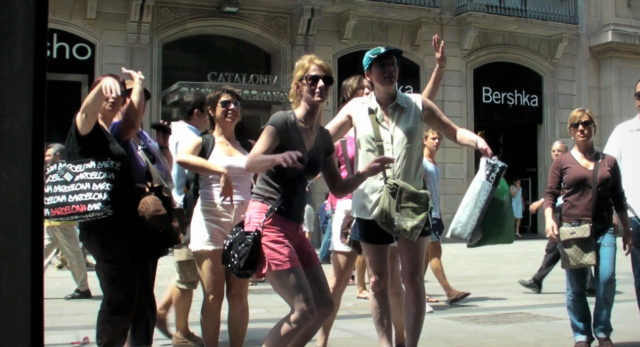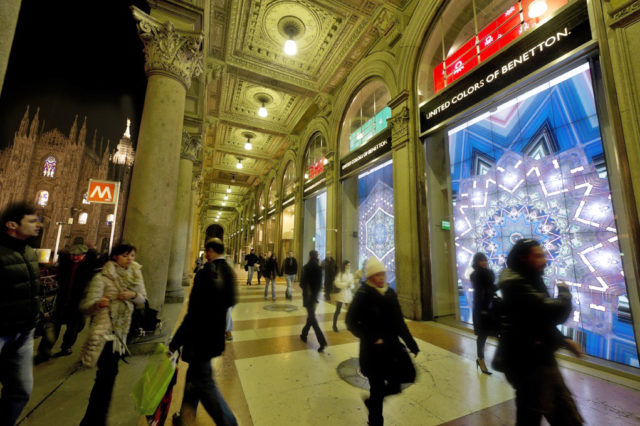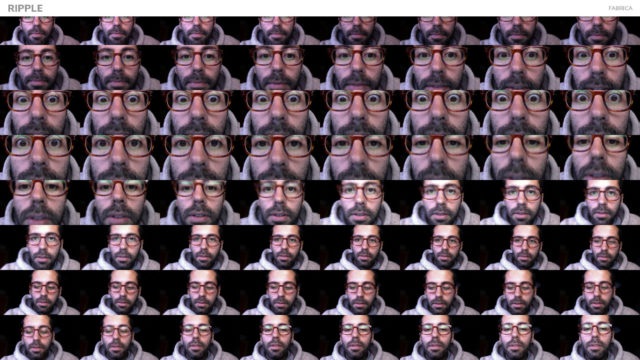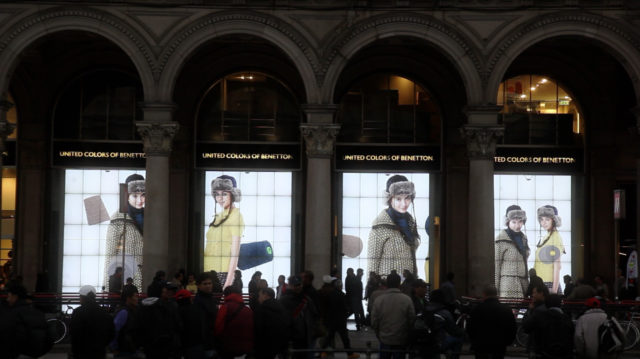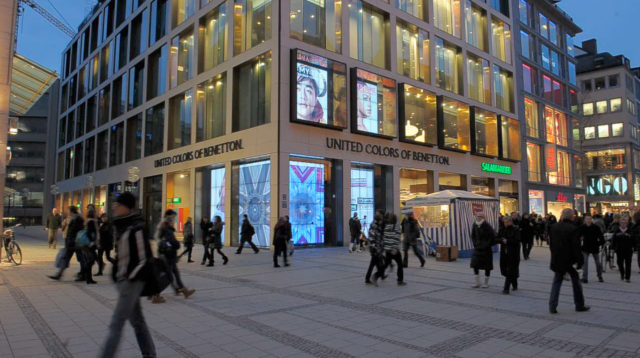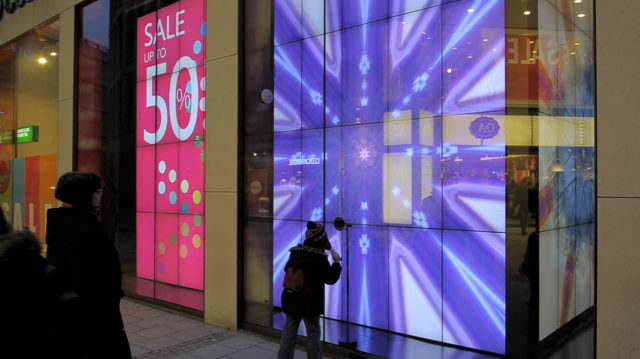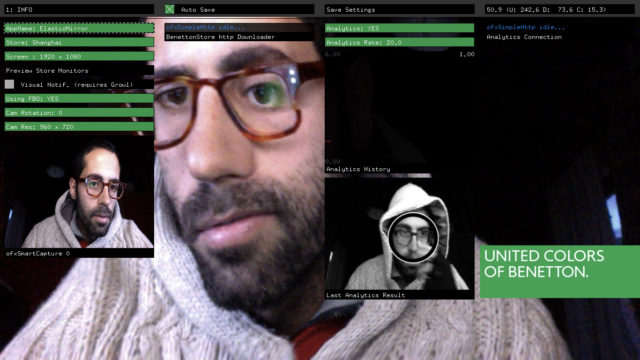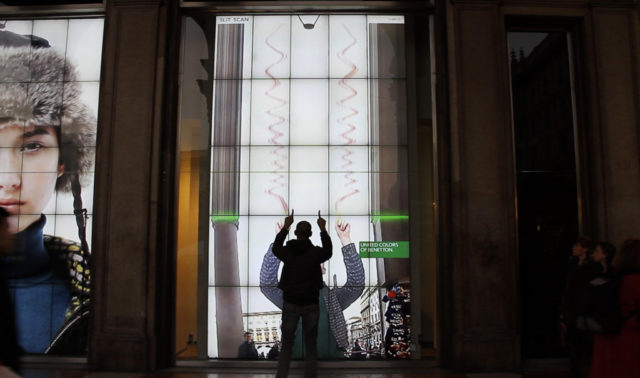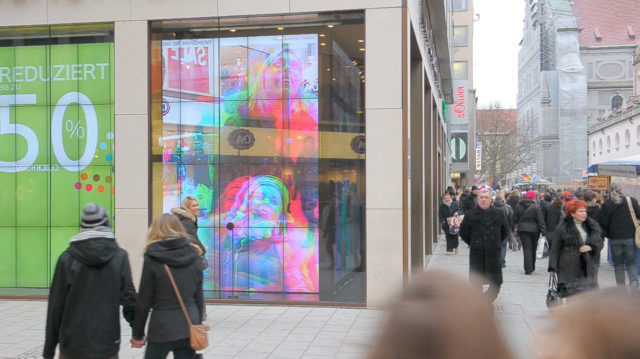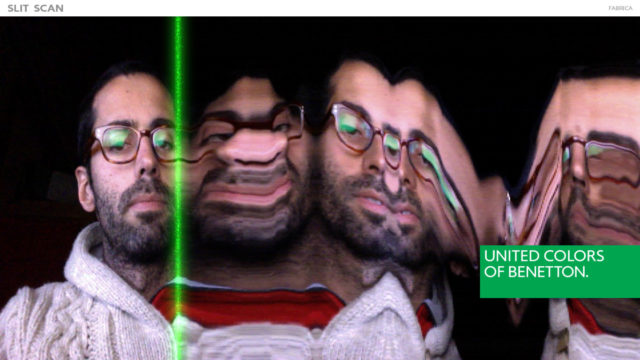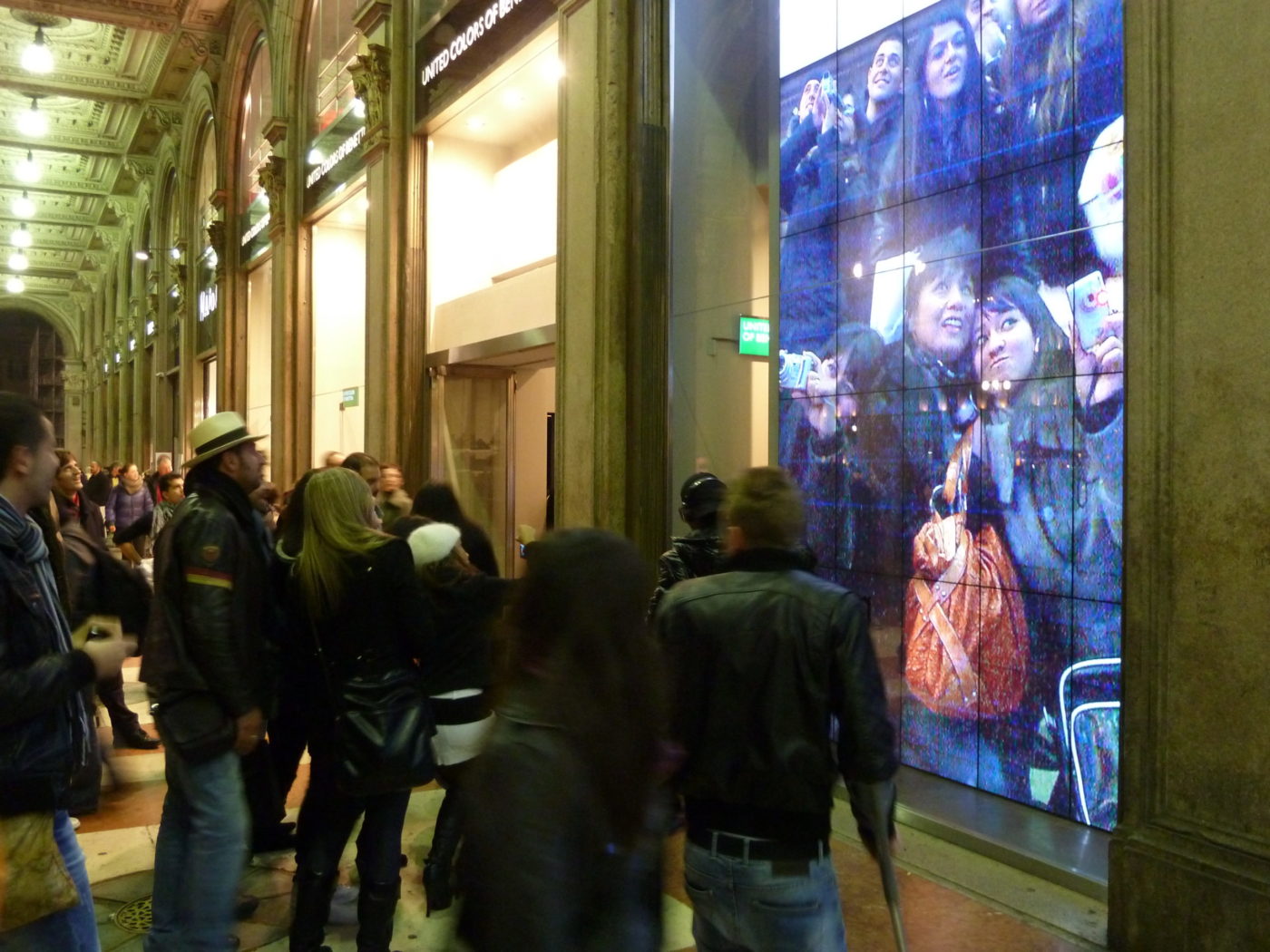Benetton Windows Interactive Platform
|
Designed and developed a platform based on OpenFrameworks to drive the “Benetton Live Windows” camera based interaction. “Benetton Live Windows” consists on very large screens installed in Benetton stores, replacing the traditional “shop window” with a “full window” video wall. Some of the key Benetton stores around the world have it, including Milan, Barcelona, Shanghai, Moscow and Munich. These video walls alternate video content and interactive content. Because each store is originally different, the video-wall layout in each store is different, making standardization impossible. Each store has a different number of video walls laid out in a different manner. Some store have one window, some four, some vertical, some portrait. The department we ran at fabrica together with Elizabeth Cretney was asked to provide interactive content for the benetton windows, within very short deadlines. At the time, each interactive installation was being compiled manually for each store, making the distribution process slow and error prone. The stores already had a video input device, a logitech webcam. I designed and implemented an openFrameworks addon to handle all the possible screen layouts, that allowed the “creative coder” (fabrica resident) to treat all screens as if they were a single canvas, using FBO’s to split the logical canvas into each of the final videoWall screens. This greatly opened the creative possibilities for the young students at fabrica interactive to develop interactive installations for the platform. Over time, we grew the platform to provide: – Multiple Screen support: the developer could easily choose to draw on each video wall individually, draw in one video wall and then clone to all others, or draw in one massive logical canvas including all video walls. – Store configs: each new store opening would only require the creation of a store definition xml file. Once this file was created and distributed to the store, all the current binaries should work (to a decent degree) in that store without any developer intervention. – Editable parameters : the platform offered an api to the developers, allowing them to expose any parameter to a debug UI, making the tweaking process much faster. The UI allowed to edit any of the parameters through a mouse or a keyboard (really useful during installs) – Error reports : email error reports on fatal or minor errors. The platform automatically reported major errors like a missing camera, but also offered an api to the installation developers to use such error reporting system in case of need. – Tracking: using face tracking to count the number of impressions, storing the results in to Google Analytics. – Centralized Asset Distribution : given the lack of access to the final computer by the “fabrica interactive” team, we had to come up with a system to distribute assets (logos, fonts, etc) across all the installations. Upon requiring it, each installation could ask a central server for an asset and download it in the background automatically. –Automatic updates: implemented but never put to use due to deployment constraints.
During my time at Fabrica, the interactive department released quite a few interactive installations for the Benetton Live Windows environment: –Kaleidoscope – development by Oriol Ferrer Mesià and produced several prototypes that were disregarded by the benetton live windows team: –Slot Machine – development by Enrico Viola |
